Related Research Articles
The Woman's Christian Temperance Union (WCTU) is an international temperance organization. It was among the first organizations of women devoted to social reform with a program that "linked the religious and the secular through concerted and far-reaching reform strategies based on applied Christianity." It plays an influential role in the temperance movement. Originating among women in the United States Prohibition movement, the organization supported the 18th Amendment and was also influential in social reform issues that came to prominence in the progressive era.

Frances Elizabeth Caroline Willard was an American educator, temperance reformer, and women's suffragist. Willard became the national president of Woman's Christian Temperance Union (WCTU) in 1879 and remained president until her death in 1898. Her influence continued in the next decades, as the Eighteenth and Nineteenth Amendments to the United States Constitution were adopted. Willard developed the slogan "Do Everything" for the WCTU and encouraged members to engage in a broad array of social reforms by lobbying, petitioning, preaching, publishing, and education. During her lifetime, Willard succeeded in raising the age of consent in many states as well as passing labor reforms including the eight-hour work day. Her vision also encompassed prison reform, scientific temperance instruction, Christian socialism, and the global expansion of women's rights.

Katherine Wilson Sheppard was the most prominent member of the women's suffrage movement in New Zealand and the country's most famous suffragist. Born in Liverpool, England, she emigrated to New Zealand with her family in 1868. There she became an active member of various religious and social organisations, including the Women's Christian Temperance Union New Zealand. In 1887 she was appointed the WCTU NZ's National Superintendent for Franchise and Legislation, a position she used to advance the cause of women's suffrage in New Zealand.

Women's suffrage in New Zealand was an important political issue in the late nineteenth century. In early colonial New Zealand, as in European societies, women were excluded from any involvement in politics. Public opinion began to change in the latter half of the nineteenth century and after years of effort by women's suffrage campaigners, led by Kate Sheppard, New Zealand became the first nation in the world in which all women had the right to vote in parliamentary elections.

Margaret Bright Lucas was a British temperance activist and suffragist. She served as president of the British Women's Temperance Association (BWTA), the World's Woman's Christian Temperance Union (WCTU), and the Bloomsbury branch of the Women's Liberal Association.

Mary Greenleaf Clement Leavitt was an educator and successful orator who became the first round-the-world missionary for the Woman's Christian Temperance Union (WCTU). Setting out on virtually non-stop worldwide tours over a decade, she "went to all continents save Antarctica," where she crusaded against alcohol and its evils including domestic violence; and advocated for women's suffrage and other equal rights such as higher education for women. In 1891 she became the honorary life president of the World's WCTU.
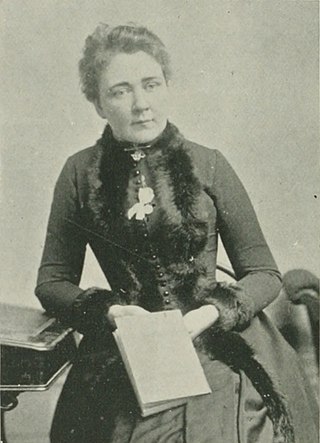
Jessie Ackermann was a social reformer, feminist, journalist, writer and traveller. She was the second round-the-world missionary appointed by the World's Woman's Christian Temperance Union (WWCTU), becoming in 1891 the inaugural president of the federated Australasian Woman's Christian Temperance Union (WCTU), Australia's largest women's reform group. Although an American, Ackermann is considered a major voice in the Australian suffrage movement.

The Local Council of Women of Halifax (LCWH) is an organization in Halifax, Nova Scotia devoted to improving the lives of women and children. One of the most significant achievements of the LCWH was its 24-year struggle for women's right to vote (1894-1918). The core of the well trained and progressive leadership was five women: Anna Leonowens, Edith Archibald, Eliza Ritchie, Agnes Dennis and May Sexton. Halifax business man George Henry Wright left his home in his will to the LCWH, which the organization received after he died in the Titanic (1912). Educator Alexander McKay also was a significant supporter of the Council.
Julia Frances Solly was a British suffragist, feminist and temperance activist. After her marriage, she moved to South Africa, where she became one of the most recognisable feminists in the Cape Colony. Advocating for suffrage, she co-founded the Cape Branch of the Women's Enfranchisement League (WEL), the first organisation in South Africa created to push for women's right to vote. Active as a pacifist, she was against both the Second Boer War and World War I, but believed that the Nazis must be stopped at all cost. She was also active in many social reform programs and was part of the purity movement. For her work on the National Council of Women, she was awarded the King George Silver Jubilee Medal in 1935.
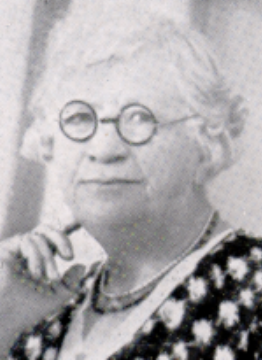
Lady Barbara Steel was a Scottish social activist who actively campaigned for Women's Suffrage in both the United Kingdom and South Africa. She was the first woman to stand in an election for the Edinburgh Town Council, when she ran in the 1907 election. Steel moved to South Africa in 1911 and at the beginning of World War I founded an organization to provide aid to South African soldiers and their families. She was honored as an Officer in the Order of the British Empire for her civil service. In addition, she served as president of the Women's Enfranchisement Association of the Union from 1916 until 1930, fighting for women's right to vote in South Africa.
The Temperance movement began long before the Eighteenth Amendment to the United States Constitution was introduced. Across the country different groups began lobbying for temperance by arguing that alcohol was morally corrupting and hurting families economically, when men would drink their family's money away. This temperance movement paved the way for some women to join the Prohibition movement, which they often felt was necessary due to their personal experiences dealing with drunk husbands and fathers, and because it was one of the few ways for women to enter politics in the era. One of the most notable groups that pushed for Prohibition was the Woman's Christian Temperance Union. On the other end of the spectrum was the Women's Organization for National Prohibition Reform, who were instrumental in getting the 18th Amendment repealed. The latter organization argued that Prohibition was a breach of the rights of American citizens and frankly ineffective due to the prevalence of bootlegging.
Women in Newfoundland won the right to vote and run for political office in 1925. The first general election in which women were able to participate occurred in 1928. In that election, 90 per cent of eligible women voters cast ballots. In 1930, Lady Helena Squires became the first woman elected into the Newfoundland House of Assembly after winning a by-election.
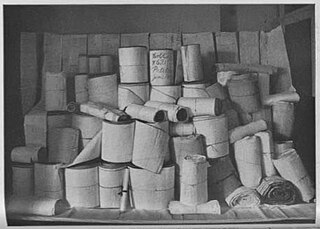
The Polyglot Petition for Home Protection was the first world-wide proclamation against the manufacturing and international trade in liquor and drugs as well as the prohibition of legalised vice. It served as a first major campaign to raise public awareness of the need for international agreements on controls for opium and its derivatives.
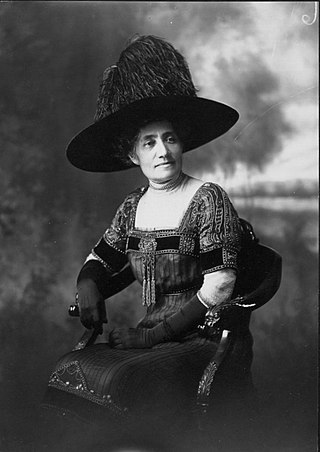
Women's suffrage in Hawaii began in the 1890s. However, when the Hawaiian Kingdom ruled, women had roles in the government and could vote in the House of Nobles. After the overthrow of Queen Liliʻuokalani in 1893, women's roles were more restricted. Suffragists, Wilhelmine Kekelaokalaninui Widemann Dowsett and Emma Kaili Metcalf Beckley Nakuina, immediately began working towards women's suffrage. The Women's Christian Temperance Union (WCTU) of Hawaii also advocated for women's suffrage in 1894. As Hawaii was being annexed as a US territory in 1899, racist ideas about the ability of Native Hawaiians to rule themselves caused problems with allowing women to vote. Members of the National American Woman Suffrage Association (NAWSA) petitioned the United States Congress to allow women's suffrage in Hawaii with no effect. Women's suffrage work picked up in 1912 when Carrie Chapman Catt visited Hawaii. Dowsett created the National Women's Equal Suffrage Association of Hawai'i that year and Catt promised to act as the delegate for NAWSA. In 1915 and 1916, Prince Jonah Kūhiō Kalanianaʻole brought resolutions to the U.S. Congress requesting women's suffrage for Hawaii. While there were high hopes for the effort, it was not successful. In 1919, suffragists around Hawaii met for mass demonstrations to lobby the territorial legislature to pass women's suffrage bills. These were some of the largest women's suffrage demonstrations in Hawaii, but the bills did not pass both houses. Women in Hawaii were eventually franchised through the passage of the Nineteenth Amendment.
Eliza Ann Brown of Invercargill organised and became the first president of the first Woman's Christian Temperance Union (WCTU) branch in New Zealand.

Women's Christian Temperance Union of New Zealand is a non-partisan, non-denominational, and non-profit organization that is the oldest continuously active national organisation of women in New Zealand. The national organization began in 1885 during the visit to New Zealand by Mary Clement Leavitt, the first world missionary for the Woman's Christian Temperance Union. The WCTU NZ was an early branch of the World Woman's Christian Temperance Union and a founding affiliate of the National Council of Women of New Zealand. Men may join the WCTU NZ as honorary members.

Fanny Buttery Cole was a prominent temperance leader and women's rights advocate in New Zealand. Cole was a founding member then president of the Christchurch chapter of the Women's Christian Temperance Union New Zealand and national WCTU NZ superintendent of the Press from 1897 through 1903. In 1906 Cole was elected national president of the WCTU NZ, a position she held until her untimely death shortly before her fifty-third birthday.
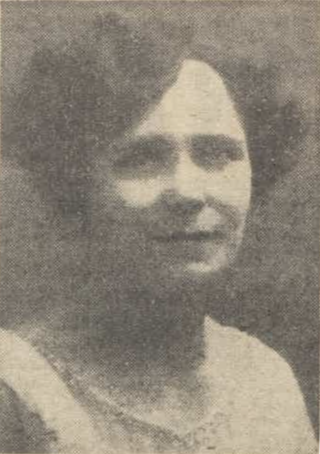
Isabella McCorkindale (1885–1971), known as Isabel McCorkindale, was a Scottish-born Australian temperance, suffrage and women's rights activist. She was a leader in both the Women's Christian Temperance Union of Australasia (WCTUA) and the World Women's Christian Temperance Union (WWCTU). As director of scientific temperance education for the WCTUA, she spent more than 40 years working to educate young people about the health and social consequences of alcohol abuse. She was international president of WWCTU from 1959 to 1962, after serving as vice-president from 1947 to 1959. She then served as national president for the Australian WCTU from 1963 to 1966. In 1961, she was appointed a Member of the Order of the British Empire for her work.

Elizabeth Brentnall was an Australian suffragist, temperance activist and philanthropist. She was the first state president (1885–99) then honorary president of the Woman's Christian Temperance Union (WCTU) in Queensland.
References
- ↑ Ian Christopher Fletcher, Philippa Levine, Laura E. Nym Mayhall : Women's Suffrage in the British Empire: Citizenship, Nation and Race